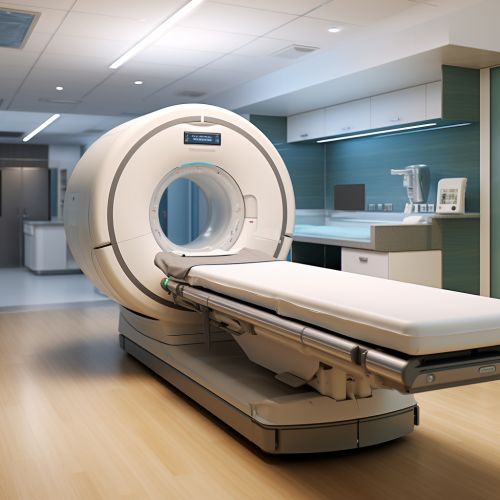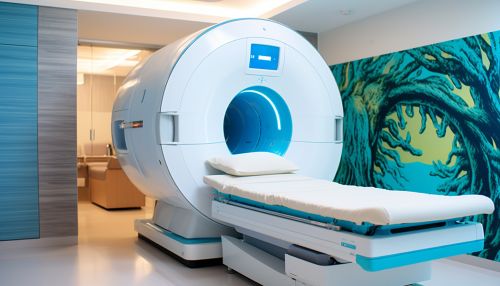Magnetic Resonance
Introduction
Magnetic Resonance (MR) is a physical phenomenon based on the magnetic properties of atomic nuclei. When placed in a magnetic field, certain nuclei absorb and re-emit electromagnetic radiation at a specific frequency. This process, known as nuclear magnetic resonance (NMR), forms the basis of MR and its various applications, including Magnetic Resonance Imaging (MRI).


Physical Principles
MR relies on the principles of quantum mechanics, specifically the behavior of atomic nuclei in magnetic fields. The key property involved is the nuclear spin, a form of intrinsic angular momentum. Nuclei with a non-zero spin generate a magnetic moment, making them responsive to external magnetic fields.
Nuclear Spin
The nuclear spin is a quantum mechanical property that is integral to MR. It is quantized, meaning it can only take certain discrete values. For a given nucleus, the spin quantum number (I) can range from 0 to an integer or half-integer value. Nuclei with a spin quantum number of 0 do not exhibit MR, as they do not have a magnetic moment.
Magnetic Moment
The magnetic moment of a nucleus is directly proportional to its spin. When an external magnetic field is applied, the magnetic moment of the nucleus aligns with the field, resulting in two or more energy states. The difference in energy between these states is proportional to the strength of the magnetic field.
Resonance
Resonance occurs when the nucleus absorbs a photon of electromagnetic radiation that matches the energy difference between the two states. This causes the nucleus to flip its spin state, a process known as spin flip. The nucleus then emits the absorbed energy as it returns to its original state, which can be detected and measured.
Applications of Magnetic Resonance
MR has a wide range of applications, from physics and chemistry to medicine and industry. The most well-known application is probably Magnetic Resonance Imaging (MRI), a non-invasive imaging technique used in medical diagnostics.
Magnetic Resonance Imaging
Magnetic Resonance Imaging (MRI) is a medical imaging technique that uses MR to visualize the structure and function of the body. It provides detailed images of soft tissues, making it particularly useful for imaging the brain, spine, and joints.
Nuclear Magnetic Resonance Spectroscopy
Nuclear Magnetic Resonance Spectroscopy (NMR Spectroscopy) is a research technique that exploits the magnetic properties of certain atomic nuclei. It determines the physical and chemical properties of atoms or the molecules in which they are contained.
Magnetic Resonance Spectroscopy
Magnetic Resonance Spectroscopy (MRS) is a non-invasive diagnostic test for measuring biochemical changes in the brain, especially the presence of tumors.
